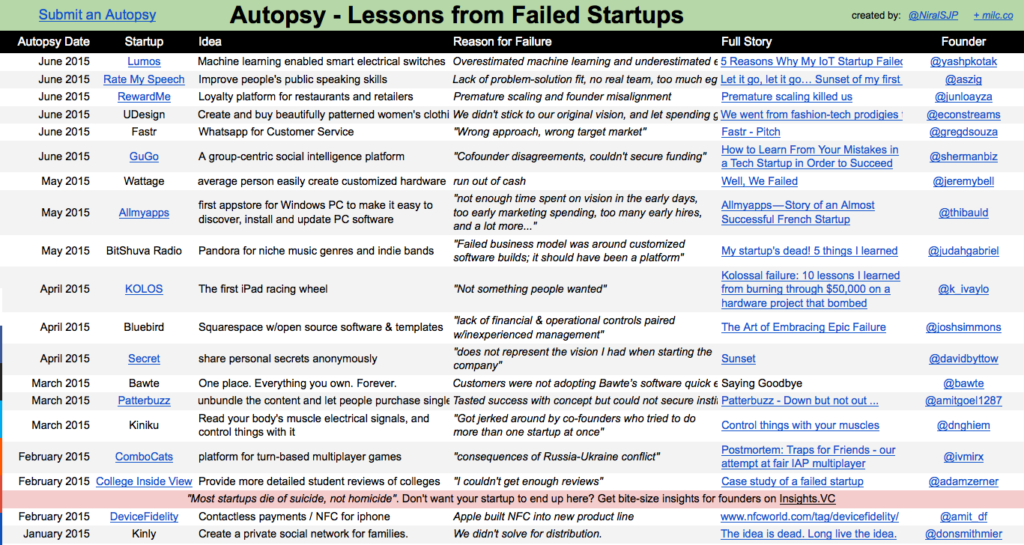Academics frequently argue for things that people do not yet acknowledge as existing. Compared to most other professions, where arguments are often between two or more things ‘on the table,’ academics profess things that they believe need to be ‘brought to the table.’ We say to students, ‘this thing you know nothing about yet, it is going to be really important for you to know (how to do) when you have a job, trust me.’ Or we say to industry, ‘believe this research, it demonstrates that you are missing a much better way to do things.’
So it can be very exciting when people in academia and industry are saying the same sorts of things. My colleagues and I at the Carnegie Mellon University School of Design shared Megan Neese’s article ‘What is a Product?’ with a sense of validation about our recent curriculum restructure toward interactions, systems of service and social innovation, and transitions to more sustainable futures. But I think Neese’s article is more significant than that: it points to fundamental challenges for design education and, more generally, for how we all make sense of ‘being in the world’ of connected things.
A Post-industrial Society, At Last!
Design academics have been talking about the coming post-industrial society ever since Daniel Bell published a book of that title in 1976. And that’s not surprising: modern design arose as the art and/or science of the interface between mass production and mass consumption. If society restructures as post-industrial, then perhaps designers become obsolete.
Of course, design academics have been responding for decades now with various versions of ‘no,’ we aren’t becoming obsolete. One version goes like this: ‘designers’ will be the most important people of all, ‘informating’ or ‘sense-making’ all that post-industrial computerized information.1 Another argues: conventional industrial design will remain the substrate of immateriality, providing the reliability that will free us to live virtually.2 A third claims: this era affords an opportunity for designers to work in different ways toward more socially sustainable societies.3 A fourth version observes, cynically, that designers will remain to conceal from people their subjugation by post-industrial systems.4
All this talk has been premature. Continued suburbanization in the North and economic development in the South, along with the personalization made possible by digital miniaturization, ensured plenty of continued work for product designers. Twentieth-century skills in detailed material form-giving, supplemented with richer understandings of how humans interacted with designed products, remained central to all the stuff we bought up until the Financial Crisis.
Neese’s article seems to suggest that things are at last different. All those things that were still ‘product designed’ now provide us (in the global consumer class) mobile access to social networking platforms, and increasingly (as per Internet of Things) also provide systems with ‘live’ usage and performance data. The consequence is product category liquidity: a phone can be a health monitoring device, a washing machine can be a just-in-time detergent logistics service, a car-share vehicle can be a city’s ‘climate change’ and ‘job creation’ policy initiative. As Neese demonstrates, in these post-industrial systems it is difficult to be a product designer when there is no clear indication as to what the product is or should be. Better, suggests Neese, to bound what is emerging more broadly, with respect to place, for instance.
So if we are finally experiencing the much-promised post-industrial society, what should a design school be teaching (industrial) designers?
Go with the Flow, or Abolish Design?
One conservative response is: keep teaching just what you’ve always been teaching them. There is still design work to be done, in the end, once the most appropriate product (or ecosystem of products) for that place has been determined. Ask an anthropologist to figure out what that place is, and design for it.
But this response doesn’t do justice to the situation that Neese is describing. The fluidity involved in these postindustrial ecosystems of connected products is not temporary. Or at least, it is not something that an anthropologist or any other researcher, even with an abundance of time and resources, can make complete sense of and then capture in a report as some fixed context that can then be handed off to designers. We are not talking about scenography, but complicated systems that alter when new kinds of products and practices are introduced.
This means that those anthropologists must work with designers, and even through design, undertaking social research by making design perturbations in sociotechnical systems. For this reason, it can also mean designers working like anthropologists, designing probes5 that can reveal more about the sociotechnical context in which the designing is happening. We should be teaching designers to practice design-as-anthropology.
But an extreme extrapolation of this argument – that it is not possible to make sense of a system before intervening in that system – suggests not only doing away with a distinct phase of anthropological research, but in some ways doing away with anthropology and design all together. In versions of Lean Startups and Data Analytics, the working assumption is that you can never and/or should never attempt to predict what will happen in a system, or even what the (boundary of a) system is. The digital nature of post-industrialism affords agile reprogramming in reaction to real-time feedback; if material forms are needed, manufacturing is increasingly rapid. The belief is that you can therefore simply start building things – not prototypes – that are deployed in the market as operational Minimum Viable Products, then re-engineer them to fit the emergent use patterns of various groups of people. And changes need not be just refining iterations; they can be drastic changes in product category – ‘pivots’ that amount to species hybridizing or species jumping.
According to this line of thinking, design—the process that underwrote industrialization by planning what to (mass) make through evaluative sketches and scenarios in studios—is being displaced by more ‘emergent’ processes of accelerated evolution. In these Lean practices, it is not necessary to understand a system to create value in that system; it is necessary only to find a way of participating in that fluid complexity. Understanding is seen to be literally a waste of time.
Given this spectrum of thinking, what should universities be teaching future (product) designers? What is the role of the university in navigating the changing postindustrial ecosystem?
The Value of Vision
Universities serve many stakeholders: They must service industry by teaching job-ready graduates. But they should also lead industry with research-derived alternative futures. Between these two is the ambition to produce graduates who will not only create value for industry now, but also in a decade, when their higher-level jobs require different skills, and when the nature of industry and society will have changed. Universities should be teaching to ‘where the puck will be.’
Universities are also supposed to serve a critical function—warning of the consequences of certain likely futures and deflecting industry from them. In this sense, universities should perhaps be opposing current dogma in design methods, insisting on strong values that counter industry trends.
What is exciting about Neese’s post is that it indicates that negotiating the product-category-as-yet-unknown contexts of digitally connected things can, and perhaps should, lead to wider ethico-political concerns like sustainability. If you do not insist on conventional product categories and instead approach a situation with a broad systems perspective, like ‘place,’ it is possible, perhaps even necessary, to find alignments between a manufacturer’s value propositions, the practices of everyday life and more equitably sustainable ways of resourcing our societies.
Today, design schools should be teaching students to counter the radical data-based evolutionary approaches that are dominant in tech companies. They should be teaching designers to work with clear commitments to ambitious visions for more sustainable societies. This would not entail being impositional, like modernist designers. To realize a vision requires working with agility within complex and changing systems. But there would be set goals by which to evaluate if things are heading in the agreed upon direction—values that you refuse to pivot away from, even when you’re using Lean principles to work at a high velocity in a fluid environment. The problem is that running counter-wise makes universities seem ‘out-of-touch.’
We face two other challenges in the revision of design school curricula in this direction. One is time. You learn to design by doing design. Though it is now taught at universities, design education is still essentially an apprenticeship, one that involves long hours in studios working in material detail. Contemporary design education has already folded in further complexities: designers learn not just to give form to things, but how to determine which forms are most appropriate to the new practices targeted groups of people will adopt with those designs. It takes so long to learn how to be expert at finessing new kinds of interactions between people and things that there is always a concern that there is just not enough time in design degree programs to be teaching other wider matters.
A second challenge is the feeling that the dispositions involved in taking heed of broad values and systems can conflict with the mindset needed to detail designs themselves. The students who can think anthropologically about complex sociotechnical systems are just never very good designers, people say; I mean look at their long reports and awful diagrams…
And so many people feel that the solution is not to pile more into the design curriculum, but to return to the strategy of teaming anthropologists with designers in Innovation labs at the fuzzy problem-framing early stages of a project. At best, they argue, an expert design detailer of interactions can, over time, mature into someone who can also negotiate the wickedness of service systems. But this is not something you can or should teach junior designers.
Transition Design: Making Some New Practices into a ‘Thing’
Design is often described as the skilled craft of making material things fit with people. But it is also about making people fit with things. There is always a social learning component in interaction design. Actually, this ‘fit’ metaphor is wrong, because it assumes that either the material thing or the person is fixed when in fact both are being co-constructed at the same time. Designing is the process of making a thing (in Bruno Latour’s ‘matter of concern’ sense), allowing people and products to converge around a new routine. Once one such ‘thing’ is in place, other pathways open up – it becomes possible to develop other ‘things.’
The situation Neese describes should be understood, I believe, in terms what we at CMU School of Design are calling ‘Transition Design.’ This framework follows an emerging body of mostly European innovation research. Transition Theory is based on ideas of sociotechnical co-evolution: that new things entail new practices, and new practices then afford different futures. However, as the term implies, Transition is not about being in a permanent state of ever-pivoting flux, but rather about multi-staged processes. It argues for making some things that can then provide platforms for the making of subsequent things. It is driven by a commitment to higher order values, such as visions of more sustainable societal futures; but it acknowledges the need to modify those in situated ways.
In fluid post-industrial systems, designers are essential for creating handles, levers, steps. We need products that can stabilize some aspects of living and working so that we might be able to pay attention to other domains in need of deconstruction. Such product designers do not merely materialize a brief for a needed product. They are in the ontological game of producing product categories. They co-produce new practices that make sense of emerging domains. This is not after anthropology, as if some non-producing discipline could précis a supposedly static domain. This is design as the construction of anthropologies, producing worlds through new products, transitioning from one world to another by through a series of products.
In Neese’s case, the question is: what next? Which practice/thing to product design that will generate possibilities for moving toward a livable, valuable version of that context?
In our case, the question for schools of design, and universities in general, is: how to teach transition to product designers?
The least answer, I believe, is for design studios to continue projects through subsequent stages: Having produced that thing last semester, what could you produce next? That doesn’t mean adding more features to that thing, but instead: what other thing would further the practices you have made possible? How could it link up with other products and practices to stabilize at least some aspects of a more sustainable way of living and working?
The challenge is that most students choose to become designers because they want to make discrete, material industrial things. At least now, we can point them to Neese’s article when announcing, ‘sorry, things are now post-industrial.’
Notes
1. See Larry Busbea “Metadesign: Object and Environment in France, c. 1970.” Design Issues 25.4 (2009): 103-119. The term ‘informating’ was coined by Shoshana Zuboff in In the age of the smart machine: The future of work and power. Basic Books, 1988.
2. See Abraham Moles’ articles “Design and Immateriality: What of It in a Post Industrial Society?.” Design Issues (1988): 25-32, & “The comprehensive guarantee: a new consumer value.” Design Issues (1985): 53-64.
3. See Nigel Cross “The coming of post-industrial design.” Design Studies 2.1 (1981): 3-7, in which Cross follows the lead of other exiles from the Design Methods movement, Christopher Alexander and John Chris Jones.
4. See Jean Baudrillard’s For a Critique of the Political Economy of the Sign. Telos Press Publishing, 1981, and The System of Objects. London and New York: Verso (1996).
5. See Kirsten Boehner, William Gaver and Amy Boucher “Probes” in Lury, Celia, and Nina Wakeford, eds. Inventive methods: The happening of the social. Routledge, 2012.




0 Comments